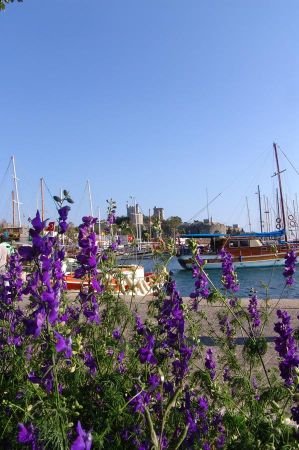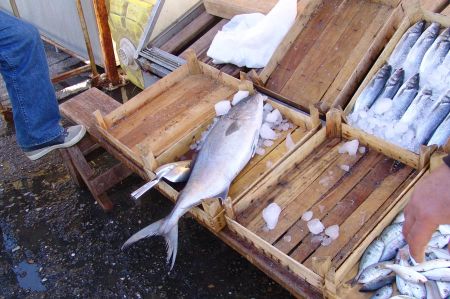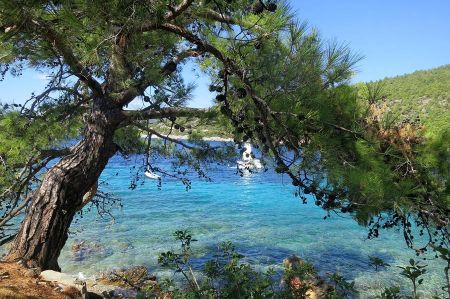Bodrum Peninsula - colourful vacation
- Written by Portal Editor
Bodrum peninsula is situated on the west coast of Turkey. The city of Bodrum lies on the south coast of the peninsula. The sea around is strewn with islands.
The city is known for its rich history, the Underwater Museum of Turkey, white-coloured, old houses located on both sides of the narrow streets, shipyards, natural beaches with clear and calm water and its outstanding lively yacht marina.
Day trips by boat or even yacht tours
 The population goes up in the summer time but for those who like serenity and a mild climate, Bodrum is a wonderful place to visit during the autumn, and even the winter.
The population goes up in the summer time but for those who like serenity and a mild climate, Bodrum is a wonderful place to visit during the autumn, and even the winter.
In the centre of town many entertainment facilities can be found. Boat trips for a day, or yacht tours for a couple of days can be taken as well as water sports and diving activities. The area is dominated by the highest standard hotels, but there are many friendly, family-run guest houses, a selection of high quality restaurants where you can dine on fresh seafood or other Aegean specialties, many shopping centres and important ancient sites.
Bodrum, whose ancient name was Halicarnassus, has an incredibly rich past. The most important inhabitant of the city was actually born there- Herodotus, known as the Father of History. The most important and well known feature of the city is the medieval Castle of St. Peter, an example of Crusader architecture. It has now been converted into the Underwater Museum. Bodrum is one of the most talked about holiday resorts in Turkey.
Bodrum is one of the most talked about holiday resorts in Turkey.
The Fisherman of Halicarnassos did so much to promote its great fame and he caused many Turkish intellectuals to fall in love with the place, so much so that now many of the country’s writers and artists can be found in Bodrum for most of the year.
Apart from the Fisherman of Halicarnassos, there are the brave-hearted sponge divers, the fishermen, anglers and captains who are in love with the sea, the traditional white-washed houses, the purple flowering begonias that climb the walls, the clean coves around the peninsula and the long entertaining nights that stretch to dawn, which all increase Bodrum’s fame. The northern side of the Bodrum Peninsula is greener as the air is more humid. The southern part is drier and the vegetation is mainly maquis.
The northern side of the Bodrum Peninsula is greener as the air is more humid. The southern part is drier and the vegetation is mainly maquis.
The restaurants are open all the time - on the water front, in nearby pretty villages, in streets of white-washed houses and in the hills.
The fresh fish, stuffed mussels, grouper and especially octopus caught in the fishing nets have been laid on ice and displayed, ready to be chosen for lunch or dinner.
Everyone can find a place in Bodrum to pass the evening, according to their preference, ranging from the fishermen’s meyhanes (small eating places featuring a wide range of entrees) to pizzerias.
 There are places where traditional Turkish music, called fasil, can be listened to or those that play rock music.
There are places where traditional Turkish music, called fasil, can be listened to or those that play rock music.
The traditional Bodrum houses have no windows on the first floor.
The doors are on the second floor with entry by ladders that can be drawn up into the house. These houses are located mostly in the villages of Ortakent and Kocakaya above Gümüslük and are now protected by the government. Some of these old traditional houses have been restored and this has made them even more worthy of a visit.
These houses are located mostly in the villages of Ortakent and Kocakaya above Gümüslük and are now protected by the government. Some of these old traditional houses have been restored and this has made them even more worthy of a visit.
There are many more villages which are worth seeing such as Karaincir, Gümüşlük, Torba, Yalıkavak, Göltürkbükü, Turgutreis, Ortakent, Akyarlar, Bitez, Gümbet,Yalıçiftlik...
Please read as well:
